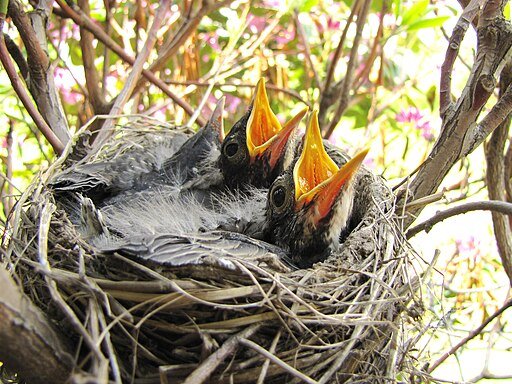The Mighty Oak: A Pillar of Western North Carolina’s Ecosystem
Photo: Oak trees by Philip Halling, CC BY-SA 2.0 <https://creativecommons.org/licenses/by-sa/2.0>, via Wikimedia Commons
By Janet Whitworth
Western North Carolina is home to a diverse and thriving ecosystem, but few natural elements play as pivotal a role as the mighty oak tree. Renowned ecologist Doug Tallamy, in his book The Nature of Oaks, champions these towering giants, stating that oaks support more life forms and ecological interactions than any other tree genus in North America. Yet, the devastating impact of Hurricane Helene has left thousands of these vital old-growth trees destroyed, raising concerns about the future of the region’s environment.
Biodiversity Powerhouses
Oaks are more than just trees—they are vibrant ecosystems. They serve as a lifeline for 557 species of caterpillars, an essential food source for baby birds. Indeed, 90% of terrestrial bird species rely on them as baby food. Studies reveal that raising a single clutch of chickadees requires between 6,000 and 9,000 caterpillars. Native bees, that emerge in late spring anxious to reproduce, also rely on plentiful oak pollen as an important source for their offsprings’ protein requirements. Bees consider oaks and other blooming trees meadows in the sky! By supporting this intricate food web, oaks enable the survival of countless species that depend on them for sustenance.
Photo: Bryancalabro, CC BY-SA 3.0 <https://creativecommons.org/licenses/by-sa/3.0>, via Wikimedia Commons
Environmental Benefits of Oaks
Beyond their contribution to biodiversity, oaks are environmental champions. Their ability to sequester large amounts of carbon helps mitigate climate change by cleaning the air. Additionally, their extensive root systems, which grow three times wider than their branches, stabilize soil, prevent erosion, and facilitate deep water absorption. This, in turn, promotes healthier watersheds by reducing runoff and nourishing surrounding vegetation. Leaf litter from oaks further enriches the soil, creating an ideal foundation for other plants to thrive.
Photo: Peter Church / Oak Trees by the Reservoir, Lineacre
Why Oaks Outperform Other Trees
Oaks excel in five key ways:
Biodiversity Value: They host more species than any other tree.
Carbon Sequestration: Oaks capture and store significant amounts of CO2.
Soil Stabilization: Their roots prevent erosion and enhance water absorption.
Nutrient-Rich Leaf Litter: Their leaves improve soil quality.
Healthier Watersheds: Their root systems support water infiltration.
Planting for a Sustainable Future
The recovery of oaks in Western North Carolina requires thoughtful planting strategies. Solitary trees, while visually striking, are more vulnerable to high winds. Doug Tallamy recommends planting young oaks in small groves of two or three, spaced six feet apart. This method encourages root interlocking, creating stronger trees that are less susceptible to blowdowns.
The Role of Property Owners in Conservation
Tallamy stresses the importance of individual action: “Property owners are the hope and future of conservation. We have to practice conservation on our private properties and balconies, not just in parks and preserves.” This message is especially relevant in human-dominated landscapes, where sustainable practices are essential.
Organizations such as Asheville Greenworks, Bee City USA-Asheville, and the North Carolina Native Plant Society are leading efforts to reforest the region and preserve its biodiversity. Supporting such initiatives or planting native trees on private land can help mitigate the environmental losses caused by Hurricane Helene.
Dr. Douglas Tallamy, author of The Nature of Oaks
A Call to Action
As the oaks of Western North Carolina face a critical juncture, the need for collective action has never been greater. Planting native trees, supporting conservation organizations, and raising awareness are all steps that individuals can take to ensure a healthier, more sustainable future for the region.
Let the mighty oak inspire us all—not just as a symbol of strength, but as a reminder of the interconnectedness of life on Earth.
Mark your calendars for May 17 when Doug Tallamy will be the keynote speaker for our “Habitatscaping: Supporting Nature With Native Plants” conference.
References
The Nature of Oaks by Doug Tallamy
Nature’s Best Hope by Doug Tallamy
Bee City USA-Asheville WNC Pollinator-Friendly Native Plant List (including oaks)



